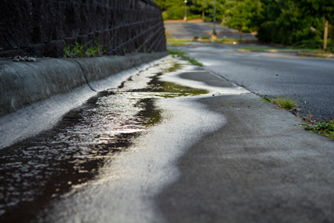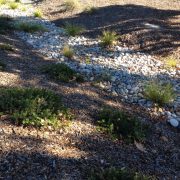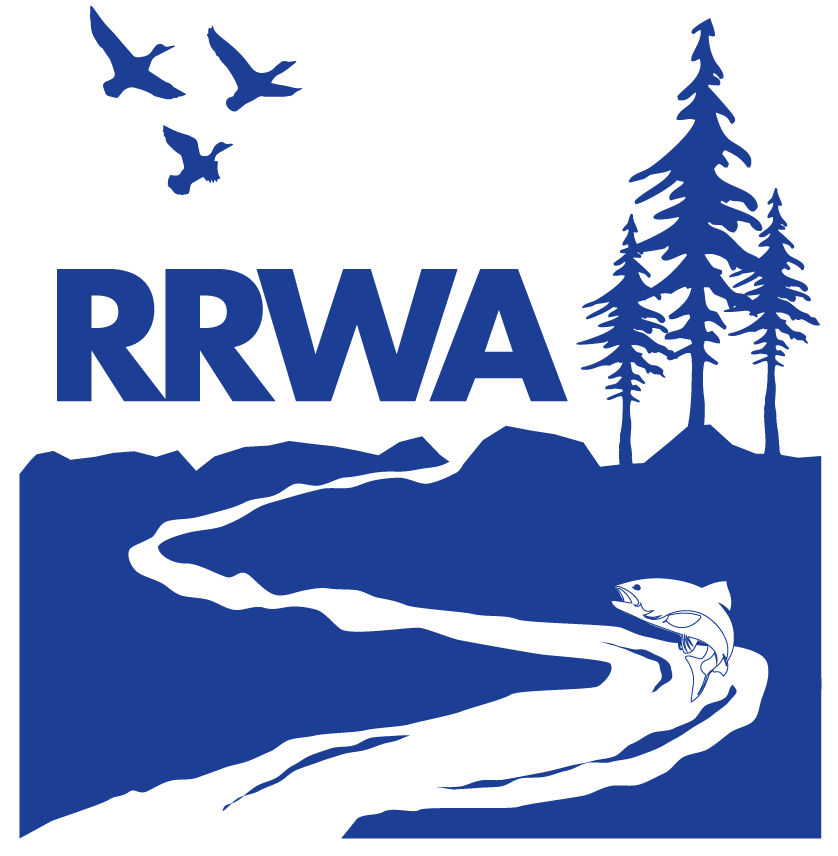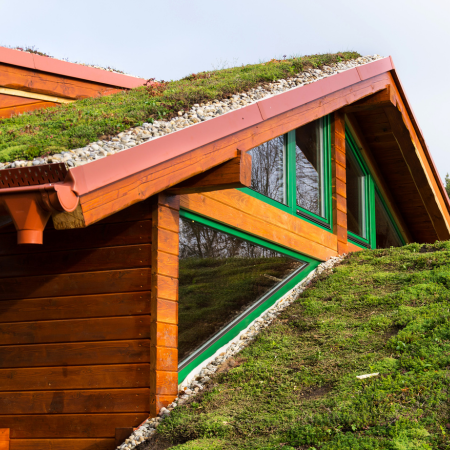Taking the Dirty Out of Stormwater
After the first few rains, our Sonoma County landscape transforms from parched golden brown to rich hues that host a world of vibrant new growth. A celebration is not only warranted for us seeing all this glorious new growth but also creating distance through time from another record setting drought. Water reservoirs this year have been full even before the beginning of our rainy season, and help us usher in the cool green of winter and reassure us there will be more time for wonderment before the risk of another wildfire season creeps in.
As we notice the abundance of stormwater filling the creeks and rivers and appreciate the beauty we are immersed in, we don’t typically delight in the thought of stormwater or the infrastructure that is needed to treat or hold it so that we have less flooding and clean healthy water pulsing through these precious local waterways.
What is the meaning of stormwater infrastructure to you? Does it bring to mind giant unseen concrete pipes, outfalls flowing under roadways dropping turbid water into nearby creeks? Does it look like uninhabitable surface water, or just plain dirty runoff?

What is Stormwater
Stormwater essentially is water that flows over impervious surfaces during a rain event. Typically, it does not easily soak into the ground but rushes off our urban hardscape such as rooftops, parking lots and paved roads. It moves with such force that oftentimes it picks up and conveys pollutants like trash, chemicals, leaves, oil, and fine sediment which all have the potential to harm our waterways and the wildlife that depend on healthy water quality as their habitat.
Stormwater Meets LID
Stormwater infrastructure is not just the typical concrete pipes, outfalls and storm drains seen around towns and cities. This infrastructure has developed over time into an integrated and even attractive part of our urban landscape. You may often pass by a stormwater feature and think it is just landscaping. These features, known as Low Impact Development (LID) treat stormwater but blend in with the natural landscape.
Since its inception, in the mid-1980s, LID has become much more than just detention ponds. In 2005, Low Impact Development emerged in Sonoma County when rain gardens and rainwater harvesting began infiltrating residential areas. The catchy phrase that encouraged the use of these systems, hearkens back to the early 2000’s when water saving partnerships encouraged us to Slow It, Spread It, Sink It. This reference to stormwater was our first taste of LID and how to manage stormwater in our urban environment.
LID Throughout the Watershed
Now LID, which was created to develop more sustainable methods for managing and treating stormwater for growing urban areas, is required for any development that creates or replaces an impermeable surface over 10,000 square feet. As the Russian River Watershed continues to grow and develop, we encounter the requirement for more Low Impact Development features.
Some newer and more common LID features we see in big development areas like shopping centers and high-density housing developments are Roadside Bioretention, Porous Pavement and Vegetated Swales. Let’s take a closer look into these so you may be able to identify them while you are out and about.
Roadside Bioretention and Porous Concrete
Roadside Bioretention often looks like a planter strip between the sidewalk and curb and gutter of a street or in a median of a parking lot. However, when you see a bioretention feature, there is always a way for stormwater to enter the feature. Sometimes a Roadside Bioretention feature has an opening in the curb which slopes into the feature and has cobble at the entrance of the otherwise vegetated area. The cobble dissipates the velocity of the water and allows it to slow before entering the feature. Cobble also captures larger contaminants like trash or leaves from compacting the soils of the feature. A narrow strip of porous concrete along the gutter pan of the road next to the feature can also be the entry point. The water that flows off the pavement spreads and infiltrates in the permeable area of the concrete. As it permeates through the concrete it flows subsurface to the feature and interacts with the soils and roots to treat potential contaminants.
The vegetation and soils in this area are engineered and play an important role in treating pollution. These specialized soils work together with plant roots to bind with the array of pollutants they encounter. As they infiltrate into the ground, contaminants magnetize to the soil and are taken up by the roots of the plants, thereby filtering the stormwater and freeing it of contamination before it enters the stormwater pipes below the surface. Once this water infiltrates through the feature it enters stormwater pipes to get carried to a nearby outfall or waterway.
Vegetated Swales
Vegetated swales or rain gardens are another common type of LID found throughout the watershed. These consist of a built-in depression where water enters the feature from rooftop downspouts, parking lots or roadways. As the water spreads across the vegetated basin, it interacts with the soils and plants in a similar way. As with all LID, these swales are designed to mimic the natural landscape. Water can pond in them but is meant to infiltrate within 72 hours of the rain event. In swales and most LID, during large rain events, there is a high flow drain that can move water more readily into the storm drain system to prevent localized flooding. Since vegetated swales may hold water, it is important that they are planted with appropriate vegetation that can thrive in various conditions. There are zones where the plants need to survive under water for a short time but other zones which do not have such intense water requirements.
Stormwater throughout the Russian River falls to the waterways with no other treatment which is why it is so important to be able to identify and maintain these specialized LID features in our watershed. If you live in a housing development that was built after 2005 you may very likely see LID in the areas around the development. Property owners are required to maintain these features so take note and be sure they are being maintained if you have one on your property.
LID and stormwater infrastructure, like most all water infrastructure, goes unnoticed to the public and is usually taken for granted. We typically only think of this essential infrastructure when we need it most, during intense rain events. As you get outside this holiday season, whether in a parking lot gathering supplies for your upcoming celebrations or out at the nearest newly developed park with loved ones, take a moment to notice the stormwater infrastructure that might be around you. Capturing all that stormwater is a fantastic feat of human ingenuity, and those LID features are magnificent as well. What other infrastructure can you think of that treats pollution before it enters the stormwater system while looking like a green space, fitting into the natural landscape like a gnome hiding in the garden?




